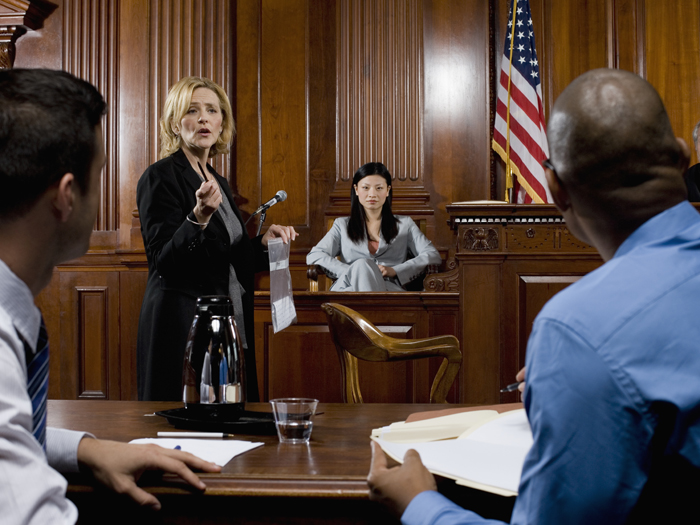3 Plaintiffs’ Attorney Tactics Driving Excess Medical Malpractice Verdicts and How to Counter Them

The frequency of medical malpractice claims has long been on the decline. In fact, Forbes has reported that the number of claims has decreased more than 50% between the 1990s and 2014. In recent years experts say it has continued to dwindle.
With this precipitous drop, many insureds might think that average costs must be shrinking as well. Unfortunately, while medical malpractice lawsuits have diminished, claims severity has increased over the last several years.
Social inflation, nuclear verdicts (those which surpass $10 million or more), and other factors are driving up claims costs. Even if a judge or jury award doesn’t reach nuclear level, excess verdicts—those which are over a policy limit—can be a major burden for doctors and hospitals. Recent high claims costs have contributed to increases in liability insurance rates, and premiums are one of many factors making it unaffordable for doctors to operate solo practices.
“When I started here 16 years ago, 75% of our policyholders were solo or small practices,” said Mark Lightfoot, regional claim executive with ProAssurance.
“Now it’s the other way around; 75% of them work for big groups.” As physicians and hospital systems navigate increasingly severe medical malpractice claims, there are a variety of tactics that insureds, their attorneys, and their insurers should be aware of so that they can prepare for defense.
Here’s a look at three common tactics amongst plaintiffs’ lawyers.
1) Projected Economic Damages
One strategy plaintiffs’ attorneys use to increase the level of medical malpractice verdicts is projected economic damages.
In a typical medical malpractice suit, plaintiffs are awarded two different types of damages: general damages and economic damages. General damages encompass things like pain and suffering, which do not have a direct monetary value. Economic damages cover items with clear financial cost, such as medical expenses.
Projected economic damages are an economic award based on future, rather than prior, expenses. If a patient is left with a permanent disability after a surgery, for instance, and files a medical malpractice suit, their attorney may ask the judge and jury to consider future medical expenses in their assessment. Some plaintiffs might even bring in a life care planner to give their estimates more credibility.
“They get the physician to sign off on what the life care planner is claiming that the patient is going to need in the future, and then they get the economist to put a number on it,” Lightfoot said. “We used to see life care plans not very long ago, six or seven years ago, that were $5 to $10 million. Well, those are now $20 to $40 million. It’s not unusual to see life care plans approaching $50 million.”
2) Jury Anchoring
Another way plaintiffs’ attorneys increase the amount awarded in a verdict is through jury anchoring. With jury anchoring an attorney will suggest an appropriate value or range of values for their client’s compensation. By putting that value in the jury’s mind, they hope to influence the trial’s outcome.
“That anchors a number,” Lightfoot said. “It has given a number to the jury that is many factors more than what the defendants would suggest is reasonable in that particular case.”
Some states prohibit lawyers from proposing what they think is an appropriate amount of compensation for their clients but, attorneys may try to get around that by saying things like, “ ‘What is this injury worth?’ I can’t tell you whether it’s worth $5 million, $10 million, or $15 million,” Lightfoot said.
But this places numbers in the jury’s mind.
3) Litigation Funding
Proposed economic damages and jury anchoring are strategies that take place in the courtroom.
Third-party litigation funding is a strategy plaintiffs use to fund cases. In these scenarios, funding occurs when a hedge fund, family investment office, or other outside investor funds lawsuits for a cut of a potential jury award.
Third-party litigation funders often try to take advantage of factors like social inflation to offer a boon to investors when the verdict comes in. Like plaintiffs’ lawyers, who have made careers out of searching for medical malpractice suits, they are arguing against institutions.
“You can’t turn on the TV and not see an advertisement for plaintiffs’ lawyers,” Lightfoot said.
What Can Defendants Do to Counter These Strategies?
With claims severity rising, many medical malpractice insureds may be wondering what they can do to reduce the chances of an excess medical malpractice verdict.
In some cases, a defense lawyer will directly respond to a plaintiff’s attorney’s tactics. With jury anchoring, for instance, the defense lawyer may suggest a value they consider more appropriate for compensation. “If they only heard the one number, then that is what is anchored in their mind,” Lightfoot said. “Anchoring absolutely has an effect on juries.”
Doctors and hospitals can prepare for litigation by ensuring they are taking good notes on each case and documenting why they made a particular decision, according to Lightfoot. That way, if the case ends up in a medical malpractice suit there is plenty of evidence to show that the physician was not acting negligently.
If a case has gone to trial, humanizing the defendant can be key to preventing verdicts from getting out of control. Ensuring that a physician has a strong presence when testifying and can effectively tell their story can help build juror sympathy. Some plaintiffs’ attorneys may attempt to prevent this by fighting against allowing doctors to apologize while on the stand.
There are, however, other tactics that can be effective for the defense. Lightfoot suggests asking physicians on the stand what motivated them to become a doctor. Oftentimes their stories of wanting to help people will move the jurors and encourage them to view the doctor as an individual rather than part of a corporation.
“A trial is unfortunately kind of a drama,” Lightfoot said. “It’s kind of a show. You’ve got to have somebody sitting in the chair who can communicate about the institution in a way that will resonate with the jury.” &











